Date: 17th April – 23rd April
With more of the mechanics being implemented, this week’s main focus is to prioritize creating more assets that are not only visually appealing but practical for the game’s development.
As mentioned in the prior post, we have made the decision to cut the boss battle from the game. This is due to time constraints within the project, especially considering we have two weeks left until our projects set deadline (04/05/2023).
We had discussed in a meeting and concluded that making a boss would require special move sets in order for the player to identify the enemy and both our programmer, Kuba and I would need to design and program an unique monster which would also delay our development schedule.
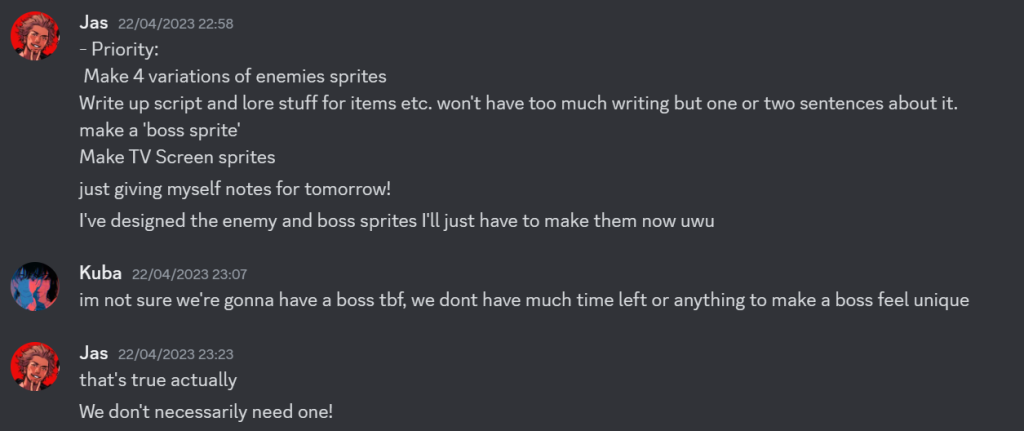
Making Detailed Sprites
When researching similar RPG-esque art styles and game mechanics, I found that a lot of older / indie games will use either descriptive text or showcase a detailed image in order to show the item that’s been picked up.
(Show examples of items being picked up – Omori and Corpse Party)
Since my main goal as an artist is to also make assets visually accessible for new and experienced players, I decided to create a sheet of detailed sprites that would pop up quickly whenever our main character picks up an item.
Before making a decision on a style we could use for these sprites, I requested feedback from my team members.
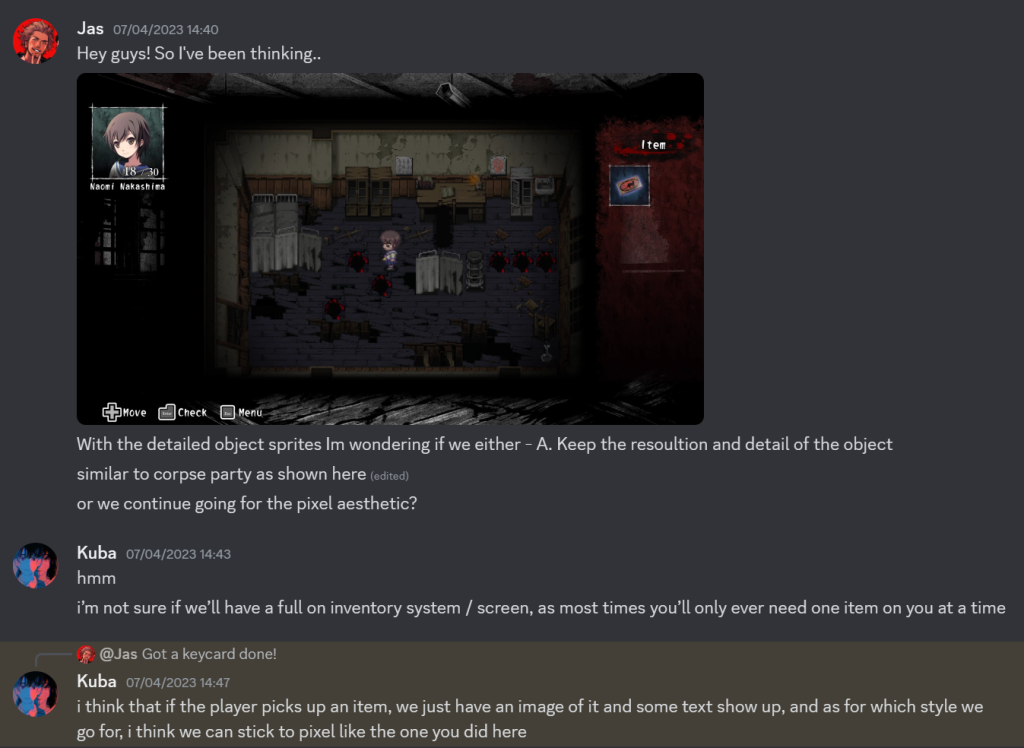

Similar to the portrait workflow, I recreated these items in a much lower resolution in order to fit the game’s asethetic.
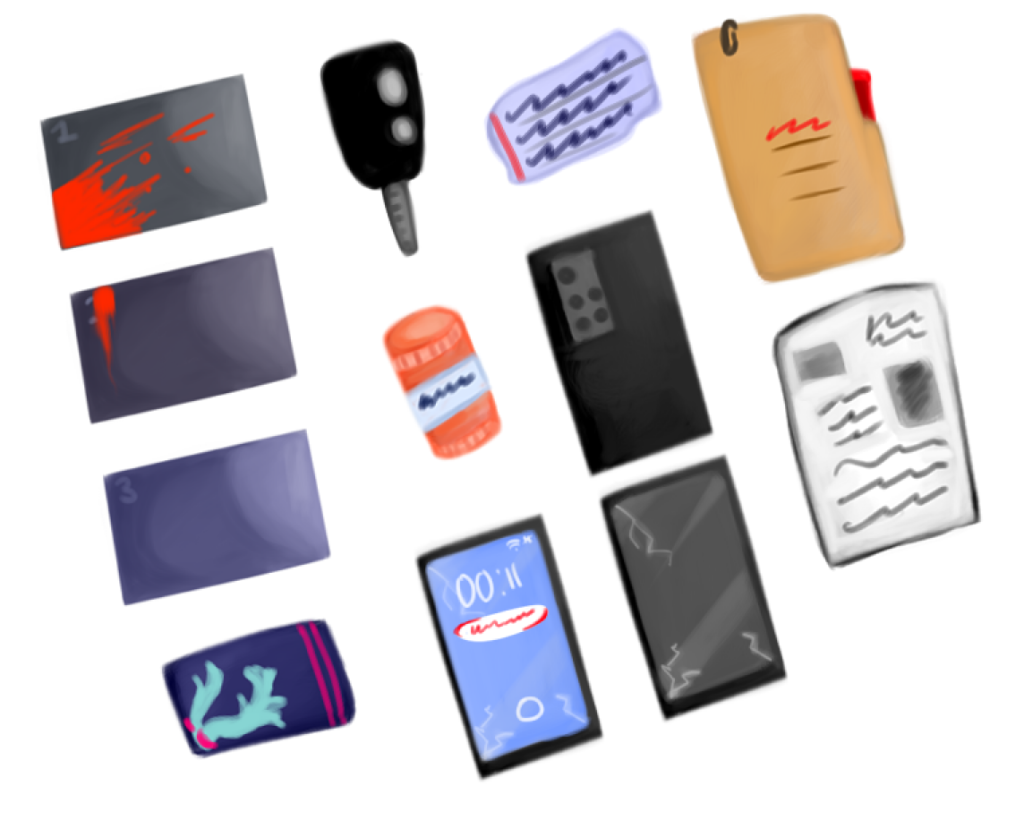

















By making detailed sprites, this also allows Damien, our level designer to focus on making floor plans rather than making unique sprites for each item as this could potentially slow down development.
In addition to this, making unique sprites for items will not only appear a couple of times throughout the levels but will also be obscured by the overall darkness of the game, making the game incredibly frustrating as there would be no indication on the location of different important items. It’s not a longterm solution especially since our game heavily relies on maintaining eyesight.
So in order to replace these unique sprites, I also made a sprite that is known as the ‘item sparkle’, used in primarily RPG games to indicate an items location, especially in horror. I also created two variants of this ‘sparkle’ – these being an ordinary interactable item and a keycard ‘sparkle’.


To demonstrate the difference between these interactables to the player, we have decided to add them into the first floor which serves primarily as a tutorial for new players. This also makes sure that players have an easier time finding these items once they traverse down lower floors as these sparkles are much easier to recognize through the darkening screen. We are also, now able to let our character interact with desk items such as computers without making special assets for pieces of dialogue.
As mentioned previously, these interactable items also come with a snippet of dialogue. Usually in smaller RPG games, they’ll simply what the player has collected. However, since I wanted our main character to be recognizable, I needed to add depth to his personality through dialogue whilst still keeping his speech to a minimum as intended.
So before writing up the dialogue, I had created a UI text box for our portrait and dialogue to reside in, big enough to fit enough text but small enough to still see the environment. Once, again these mechanics are also inspired by heavy dialogue games such as Stardew Valley.


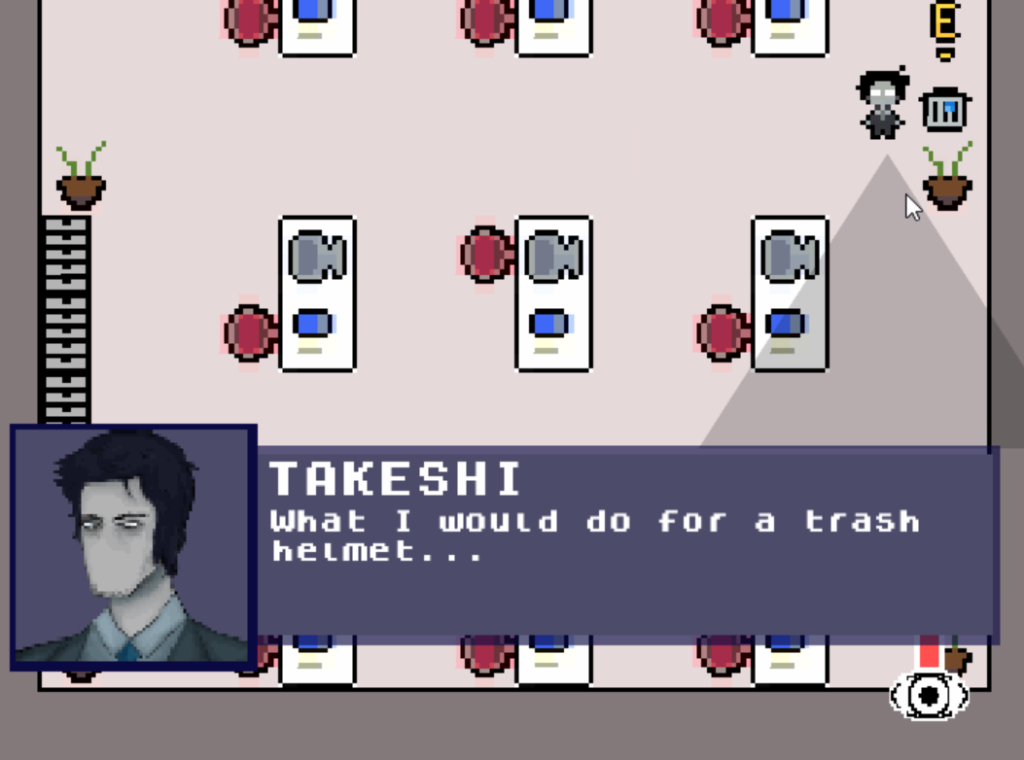

Afterwards, I started writing some test dialogue for the tutorial level – mainly certain interactables around the office that gives him a more level headed but lighthearted approach to his night whilst giving parts of his daily life, making him feel more like a person than a vessel the player controls.
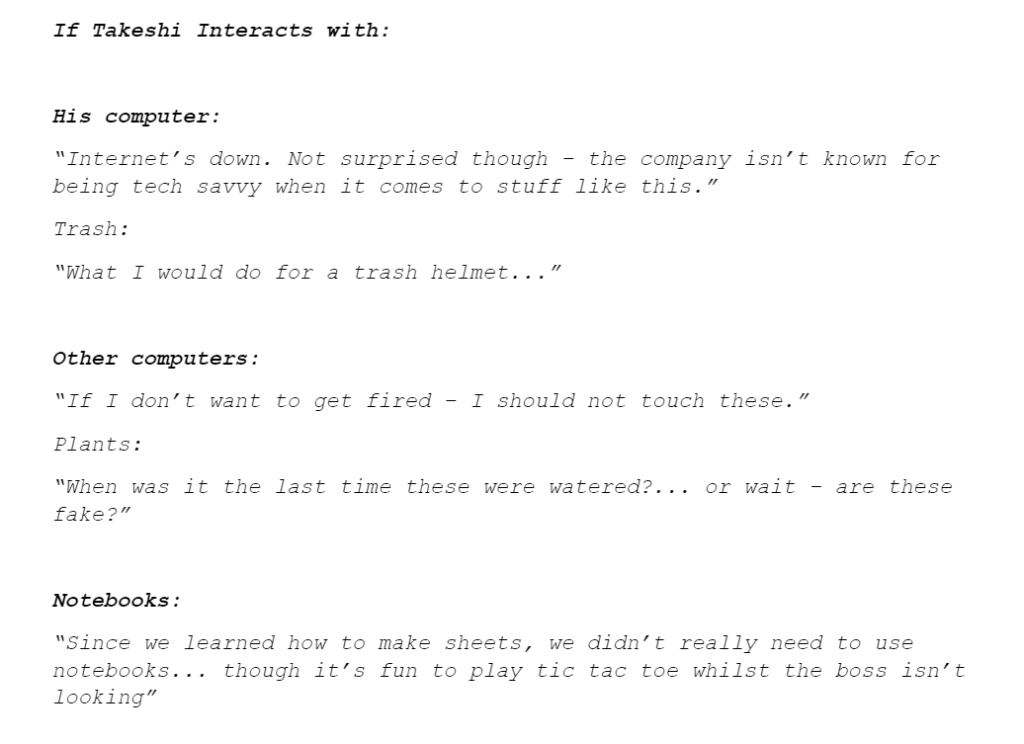
When writing his main character, even when his dialogue is limited and the game is relatively small, I try to plan out his personality by starting off the script with a couple of notes.

Whilst these paticular notes may not appear in the script for the final game, This helps me write his speech patterns as well as serving as a reminder whenever his dialogue seems “out of character”. In this case, we had agreed to make his character lighthearted but quiet and stoic around others. This means, for his character, him making small comments with certain items would fit his personality.
Next week, as I finish the dialogue for the small tutorial level, I will now focus on finishing up the script as well as making extra enemies for each level.